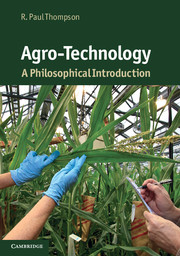Book contents
- Frontmatter
- Contents
- List of figures
- List of tables
- Preface
- Introduction
- 1 Scientific background
- 2 Application of genetics to agriculture
- 3 Philosophical and conceptual background
- 4 The controversy
- 5 The controversy
- 6 The controversy
- 7 The organic alternative
- 8 Impacts on low- and middle-income countries
- Concluding remarks
- Bibliography
- Index
Preface
Published online by Cambridge University Press: 05 June 2012
- Frontmatter
- Contents
- List of figures
- List of tables
- Preface
- Introduction
- 1 Scientific background
- 2 Application of genetics to agriculture
- 3 Philosophical and conceptual background
- 4 The controversy
- 5 The controversy
- 6 The controversy
- 7 The organic alternative
- 8 Impacts on low- and middle-income countries
- Concluding remarks
- Bibliography
- Index
Summary
I have a long-standing personal interest in food: its history, its biology and chemistry, its production and its preparation. Hence, cooking provides a creative outlet, one in which my academic curiosity about the history, biology and chemistry of food can be combined with creating new methods of preparation, new ingredients and combinations of ingredients, and new combinations of flavours. Pursuing this interest has led me to delve into the history of food, especially the last 10–15,000 years of the domestication of plants and animals and the introduction of novel foods in diverse regions of the globe, including wild sources of ingredients (see Elias and Dykeman, 1990; Gardon, 1998; Henderson, 2000; Thayer, 2006). It also has led me to study food chemistry and the cell and molecular properties of food, the transformation of food during preparation (such as the Maillard reaction when food is heated), the physiology and neuroscience of taste, and modern agricultural practices, food processing and food distribution. This book focuses mostly on the latter, specifically on biotechnology in agriculture and the controversy surrounding it.
- Type
- Chapter
- Information
- Agro-TechnologyA Philosophical Introduction, pp. xi - xiiiPublisher: Cambridge University PressPrint publication year: 2011

